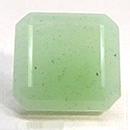|
|
||||||||||||||||
|
||||||||||||||||
|
||||||
|
|
|
|
Talc
|
|
| | |
| Discovered in 1546; IMA status: Valid (pre-IMA; Grandfathered) | ||
|
| ||
|
Chemistry |
|
|
| |
|
Mg3Si4O10(OH)2 | |
|
|
Magnesium Silicate Hydroxide |
|
Molecular Weight: |
379.27 gm |
|
Composition: |
Magnesium |
19.23 % |
Mg |
31.88 % |
MgO |
|
|
Silicon |
29.62 % |
Si |
63.37 % |
SiO2 |
|
|
Hydrogen |
0.53 % |
H |
4.75 % |
H2O |
|
|
Oxygen |
50.62 % |
O |
|
|
|
|
|
100.00 % |
|
100.00 % |
= TOTAL OXIDE |
|
|
|
||||
|
Classification |
|
|
| |
|
SILICATES (Germanates) | |
|
8/H.09-40 | |
|
|
9 : SILICATES (Germanates)
|
|
Related to: |
Isostructural with Pyrophyllite-Talc Group. Talc Series. |
|
Varieties: |
Beaconite, Chromian Talc, Polyphant Stone, Pseudolite, Steatite |
|
Synonyms: |
Agalite, Asbestin, Colubrine, Federweiss, French Chalk, Gilstein, Lardite (of Wallerius), Lavezstein, Leberstein (of Haditsch & Maus), Mussolinite, Ollite, Talck, Yalck |
|
|
|
|
Crystal Data |
|
|
|
|
|
Crystals platy, pseudotrigonal pyramids, to 1 cm; fibrous, fine-grained compact, massive |
|
|
None |
|
|
|
|
|
Physical Properties |
|
|
|
|
|
Perfect on [001] |
|
|
Sub-Conchoidal |
|
|
Sectile; flexible but not elastic |
|
|
1.0 (Mohs hardness reference species) |
|
|
2.58 - 2.83 (g/cm3) |
|
|
Fluorescent; orange yellow under SW UV, yellow under LW UV (not always fluorescent) |
|
|
Not Radioactive Thermal Behaviour: Stable to about 900 degrees Celsius. |
|
|
Other: |
Thermal Behaviour: Stable to about 900 degrees Celsius. |
|
|
|
|
Optical Properties |
|
|
|
|
|
Light to dark Green, Brown, White; Colorless in thin section |
|
|
Translucent |
|
|
Pearly, Greasy, Dull |
|
|
1.538 - 1.600 Biaxial ( - ) |
|
|
0.0510 |
|
|
Perceptible; r > v |
|
|
Weak; only visible in dark varieties |
|
|
|
|
|
Occurances |
|
|
|
|
|
Geological Setting: |
In talc-rich schists or steatite through hydrothermal alteration of mafic rocks (steatitization) subsequent to serpentinization during greenschist facies metamorphism. Also formed by thermal low-temperature metamorphism of siliceous dolostones. |
|
Common Associations: |
Actinolite, Tremolite, Chlorite, Pyroxene, Vermiculite, Serpentine, Anthophyllite, Dolomite, Calcite |
|
Common Impurities: |
Ni, Fe, Al, Ca, Na, H2O |
|
Type Locality: |
Unknown |
|
Year Discovered: |
1546 |
|
View mineral photos: | |
|
|
|
|
More Information |
|
|
|
|
|
| |
|
|
|
|
Distribution
of Talc is of widespread occurrence. Some localities for good crystals
or pure material include: on Mt. Greiner, Zillertal,
Tirol, Austria. At Zermatt, Valais, and St. Gotthard,
Ticino, Switzerland. From the Pfitschtal, Trentino-Alto
Adige, Italy. At the Trimouns talc deposit, six km northeast
of Luzenac, Ariμege, France. From Goepfersgruen,
Bavaria, Germany. At Snarum, Norway. In the Onotosk
deposit, Irkutsk, Siberia, Russia. In the USA, near
Fowler, St. Lawrence County, New York; Delta, York County,
Pennsylvania; Smithfield, Providence County, Rhode Island;
Rochester, Windsor County, Vermont; Holly Springs, Cherokee
County, Georgia; near San Andreas, Calaveras County, California.
|
|
|
We
have not photographed our Talc
gems. Please
check back soon. |
